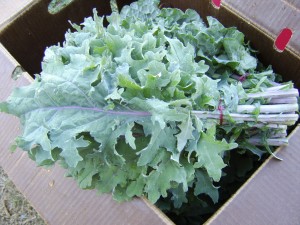I know it is mid winter and winter gardens get planted in August at the latest, but we have been looking at an acre of winter vegetables and have been inspired to complete a long needed update of this document. It is version 4.0 and full of new info and opinions. Let us know what you think and we will update it like open source software, slowly but surely.
Tag: Kale
Yesterday was the Eugene Permaculture Guild’s annual Spring Seed Swap. Every year, hundreds of gardeners and seed savers convene for a few hours on a Saturday to share seeds, plants, and a potluck meal. The event is more than the free gifting of seeds, though, and has become a pivotal community event for the local gardening scene.
This year was the Seed Ambassadors Project’s first appearance at the spring seed swap, and we brought two grocery bags filled with seed that we have saved in the past few seasons. By the end of the day these bags were whittled down to one tenth of their original quantity. It is so great to think of so many local gardeners growing locally saved seeds! Of course, we did not come away empty handed, as we gathered samples of some locally saved tomatoes, orach, mustard, a gourd, a salsify, a parsley, a root parsley, and a blue flat leafed kale that we are really excited about.
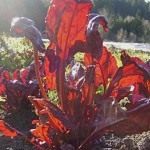
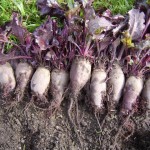
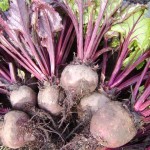
Joy Larkcom’s Bull’s Blood Chard, Ukrainian Beet, Kamuoliai 2 Beet (from Lithuania)
We believe that it is essential that home gardeners and farmers save seed to preserve genetic diversity. It is apparent that even small seed companies are unable and/or unwilling to do so, as they must respond to the forces of the market and whims of the large seed companies. Locally stewarded seed is of course optimal, though national seed saving networks, such as the Seed Saver’s Exchange, are also very excellent in this regard. One of the goals of the Seed Ambassadors Project is to encourage local seed saving. Each time a variety of vegetable is saved in a particular bioregion (or microclimate or garden), it adapts to the specific conditions of that place. Ultimately, food sovereignty begins with seed sovereignty.
As we have mentioned in previous posts, our seed quest last winter resulted in the collection of more than seven hundred varieties of seed, many not available in the United States. Added to this amount are the fifty or so varieties we collected this year in Romania, and a few dozen other varieties collected by other friends Seed Ambassadorizing in Mexico and Italy. While we are doing everything we can to grow out as many of these varieties as possible in our own large seed garden, isolation distances required by many biennial outbreeders (beets and chard, brassicas, onions and leeks, parsnips and carrots) severely limit the amounts of these species we can grow out to seed in any given season.
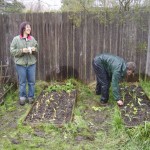
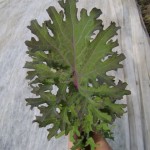
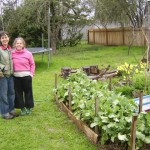
Sarah and John Herberg with some onions, Russian Hunger Gap Kale, Alison Kinney with Sutherlin Kale
Last year we grew several of each of these species, not quite knowing how we would isolate them this year for flowering and seed production. Several people have contacted us through our website and offered to help (thank you!), and we are trying to plug these people in as much as possible.
Originally arranged 8/06 by Andrew Still and updated 7/07 with small update 8/14.
Introduction
Brassica napus
It is hard to convince everybody of this fact, but kale is the swellest of vegetables and Brassica napus is the best of the best. The Russo-Siberian Kales mostly have come out of Northern Europe and Northern Asia, though in the past century they have been shuffled back and forth across the globe like many of our cultivated plant species. Red Russian and Siberian are the two most well known varieties in the United States, however many others have been developed from these lines.
These kales are typically more tender and have a milder flavor than the European “oleracea” kales and are therefore the young leaves are better for salad use. They are always superb as a cooked vegetable when the leaves have grown to full size. Most Varieties are great for used for their springtime sprouts (similar to broccoli raab), although some varieties are specially bred for that use.
Napus kales are super hardy winter survivalists. They are hardy to at least 10°F once established and some sources claim them to be hardy to -10°F and maybe -20°F. Survival at these extra low temperatures may require a good mulch and/or snow cover. There are many factors known and unknown that can effect winter hardiness and there can be no real guarantee for how cold a crop can go. Wind can be an important factor in killing plants and a pattern of freeze thaw freeze thaw can also be detrimental. They Perform best in cool weather but many varieties of napus kales tolerate hot weather. It is widely known that the flavor of Russo-Siberian kale sweetens dramatically after first frost. It can be grown anywhere in the US and even in Alaska.
Being variable in its forms, Brassica napus is divided into three groups or subspecies. The Rutabaga (Swedes in England) is ssp. napobrassica or rapifera and are grown for grown for their swollen stems/roots that resemble turnips (B. rapa). Russo-Siberian Kales and Hanover Salad are ssp. pabularis or pabularia and are grown for their leaves that may resemble those of the European kales (B. oleracea). Winter rape and canola, colza in India, are grown for their edible leaves, livestock forage, or for the oil rich seed. All have large, flat leaves 12-20 in (30.5-50.8 cm) long and 8-15 in (20.3-38.1 cm) wide, stand 2-4 ft (0.6-1.2 m) when mature, have yellow, cross-shaped flowers with four petals and the small seed develops in sickle shaped pods.
Presently, the species Brassica napus is thought to have originated from a chance hybridization between Brassica rapa and Brassica oleracea. This cross probably happened in European gardens during the Middle Ages. The rutabaga, kale and rape may have all originated from separate chance hybridization between the diverse forms of B. napa and B. oleracea. For example, napus kale could have been derived from B. oleracea ssp. acephala (kale/collard) crossing with the B. napa ssp. chinensis (Asian mustard). The rutabaga could have been derived from B. oleracea ssp. acephala (kale/collard) crossing with the B. napa ssp. rapifera (turnip).
The red Russian type of kales may have a different story. Tim Peters of Peters Seed and Research did an experiment to retrace the evolution of B. napus. He first crossed a Chinese cabbage (B. rapa) with a European kale (B. oleracea). He did these crosses with a bud pollination technique, which he says “lets the two species have more time to get to know each other”. After the first cross the result was a beautiful Siberian kale (B. napus). then he crossed in black mustard (B. nigra). This resulted in the red Russian type (B. napus?) with its distinct color and leaf shapes. So some of the B. napus species are two way mix-ups and some are three way mix-ups. How wonderful! This throws a wrench of doubt into the machine of the probable genealogy of plants, such are the ways of science.
Classification Information for Brassica napus ssp. pabularia
Order Capparales
Family Brassicaceae (mustard family)
Genus Brassica (mustard genus)
Species Brassica napus (rape species)
Variety/Subspecies pabularia (Siberian kales) Continue reading
